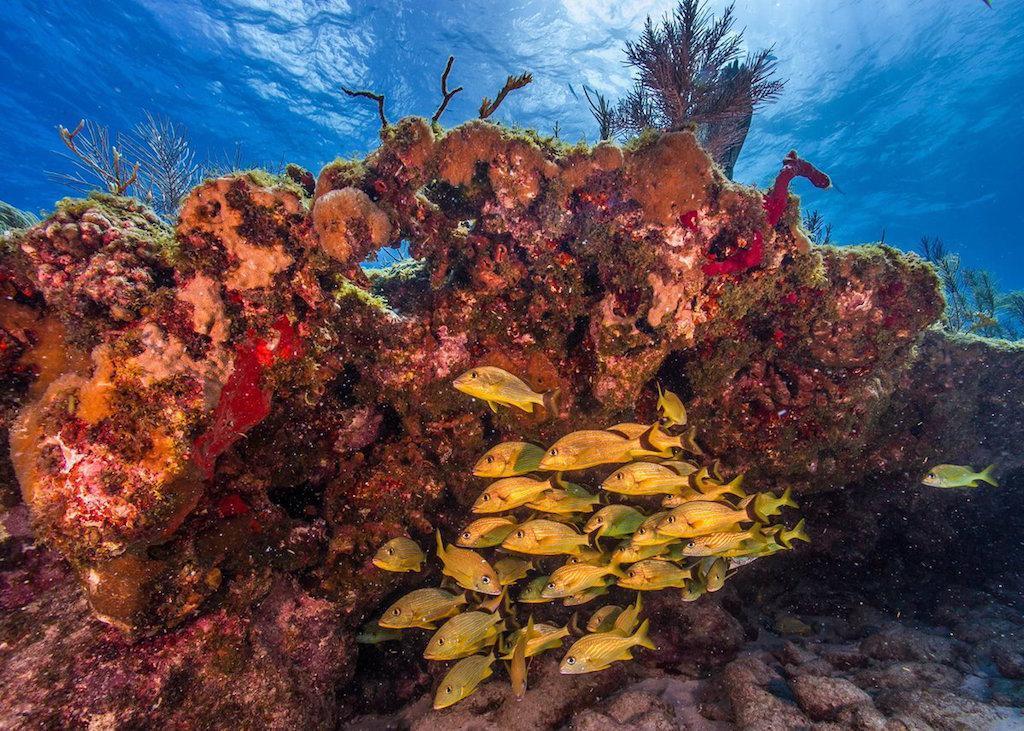
A federal judge has ordered the National Park Service to promulgate regulations for a Marine Reserve Zone at Biscayne National Park/NPS file
Nine years after the National Park Service said it would set aside 6 percent of Biscayne National Park as a Marine Reserve Zone protected from fishing, only to backtrack under political pressure, a federal judge has ordered the agency to move ahead with the designation.
"Nine years after NPS committed to promulgating a regulation to establish a Marine Reserve Zone ... it still has not promulgated a draft regulation. In the meantime, the park’s coral reefs have continued to suffer from NPS’s delay," wrote U.S. District Judge Rudolph Contreras. "The Court holds that NPS cannot wait any longer. ...Defendants shall publish a proposed special regulation to designate the Marine Reserve Zone as soon as practicable.
The ruling, handed down Friday, stemmed from a lawsuit brought by the National Parks Conservation Association over the condition of the park's ailing coral reef ecosystem.
The “ruling is a long-awaited triumph for Biscayne National Park, its hundreds of thousands of annual visitors, and the vulnerable marine wildlife that make their home here," said Dr. Melissa Abdo, NPCA's Sun Coast regional director. "We filed this lawsuit to hold the National Park Service and Department of the Interior accountable for the promises they made to protect one of our country’s greatest marine wonders from destruction. We went to court because this national park deserved better.”
When Biscayne officials announced in June 2015 that they were going to set aside 10,000 acres in the protected zone, then-Superintendent Brian Carlstrom said, "Our primary goal is a natural, healthy marine ecosystem for visitors to explore, learn about, and enjoy" said Superintendent Brian Carlstrom. "This plan will guide us and help ensure that the park's vital and extraordinary coral reefs, mangrove forests, extensive tracts of Biscayne Bay and the Florida Keys, and 10,000 years of human history, will be protected for future generations."
Not long after, though, the commercial fishing industry and Florida's congressional delegation got the Park Service to back away from the plan despite 90 percent of public comments in favor of the plan, the ruling noted.
Once upon a time, the reef in Biscayne, the country's largest marine park, featured a wondrous and bountiful array of species, from bonefish, tarpon and oysters to groupers, barracuda, spiny lobster, and lustrous parrotfish. But, according to the U.S. Environmental Protection Agency, Florida's burgeoning population and coastal development have pushed the state's reefs into a long, 40+-year decline, "with many reefs losing more than half of their coral cover."
The state and the Park Service ine 2015 had seemed in agreement in to create a Marine Reserve Zone that would cover approximately 6 percent of the park's waters, or 10,522 acres, and protect 2,663 acres of the park's coral reefs. Significantly, placing that acreage of coral reefs into a marine reserve would contribute towards the U.S. Coral Reef Task Force's goal of having 20 percent of Florida's reefs within such reserves.
But the pushback from the fishing industry and politicians prompted the Park Service to shelve the marine reserve plan. In his ruling, Judge Contreras noted the harm that has fallen on the park because of that decision.
"[t]he park is not doing well, and commercial fishing is part of the reason why," he wrote in the 56-page ruling [attached]. "The park’s famous coral reefs 'have been in decline . . . , due in large part to . . . fishing pressure and vessel groundings as well as a number of factors outside the control of marine park managers such as climate change and disease.'"
The judge also pointed to studies showing that the reef in Biscayne has had dramatic declines in living coral, from approximately 28 percent of the reef 30 years ago to just 5-8 percent today. And he noted that while park regulations ban commercial fishing in Biscayne's waters, the Park Service has allowed it to continue nonetheless.
Ironically, the ruling noted, the Park Service acknowledges the decline in reef health.
"As of 2024, NPS still has not implemented the Marine Reserve Zone or the commercial fishing phase-out," Judge Contreras wrote. "It has not promulgated draft regulations for public comment. And conditions in the park have continued to deteriorate. In March 2020, NPS posted online that 'the coral reefs’ continued decline is accelerating and that live coral cover at two reefs in the southern portion of the Biscayne . . . has declined drastically in the last few years.'”
Abdo said the ruling could reverse those conditions.
“Overfishing, pollution, and climate change impacts have dealt serious blows to Biscayne National Park in recent years," she said. "Marine wildlife populations are teetering on the brink of collapse. A revered coral reef ecosystem, one that supports a diverse range of species from sea turtles to snappers, hangs on by a thread. But thanks to this ruling, national park advocates have a chance to restore this beautiful marine national park to its former glory."



Comments
Also known as Bouncer, I was lucky enough to travel to France 10 years ago for an international convention on Marine reserves and protected areas. It was the last bit of convincing me how valuable and needed more marine reserves are needed along the Florida coast. Every where reserves exist the fish populations and marine environment has improved. I hope Biscayne National Park will now establish and enforce this marine reserve.